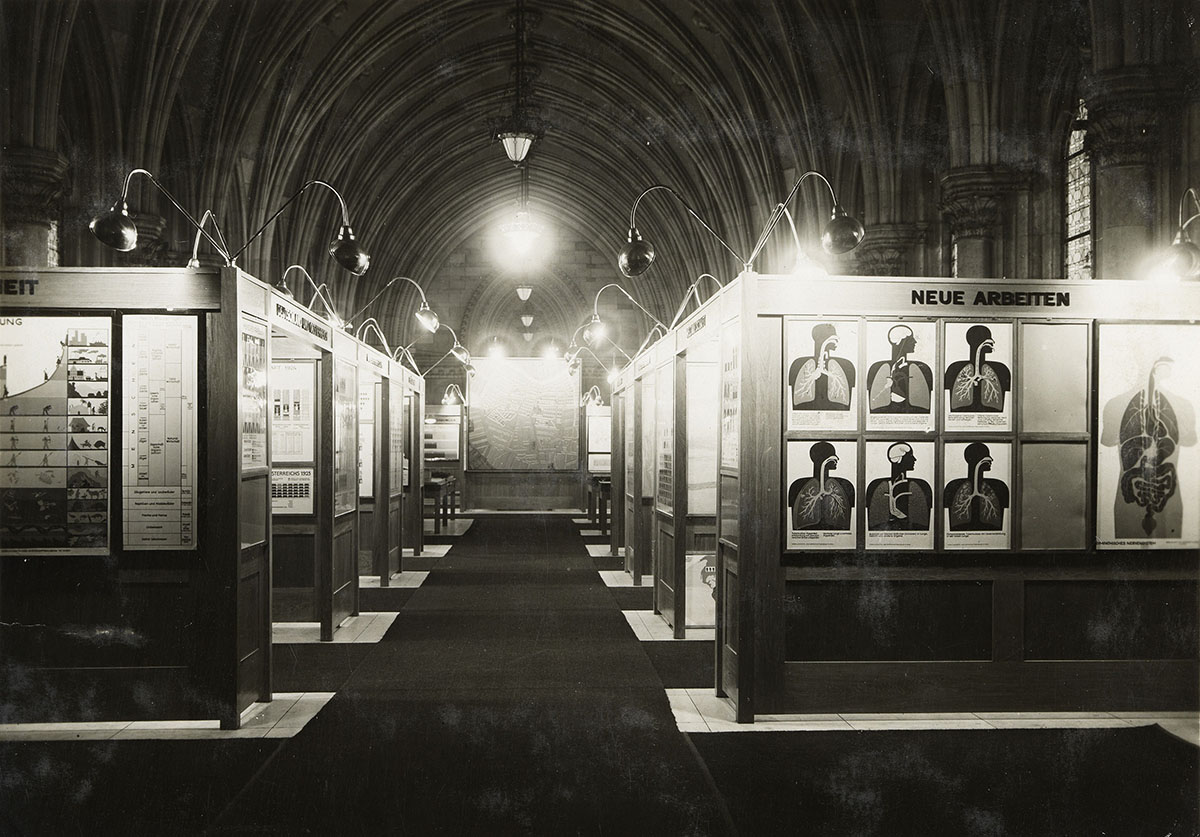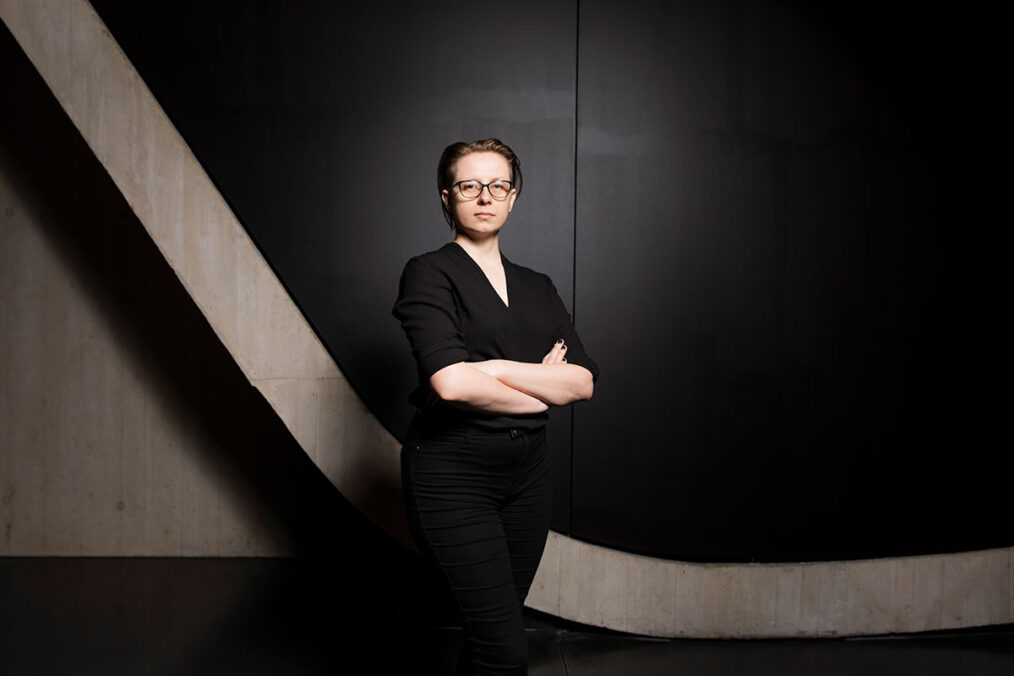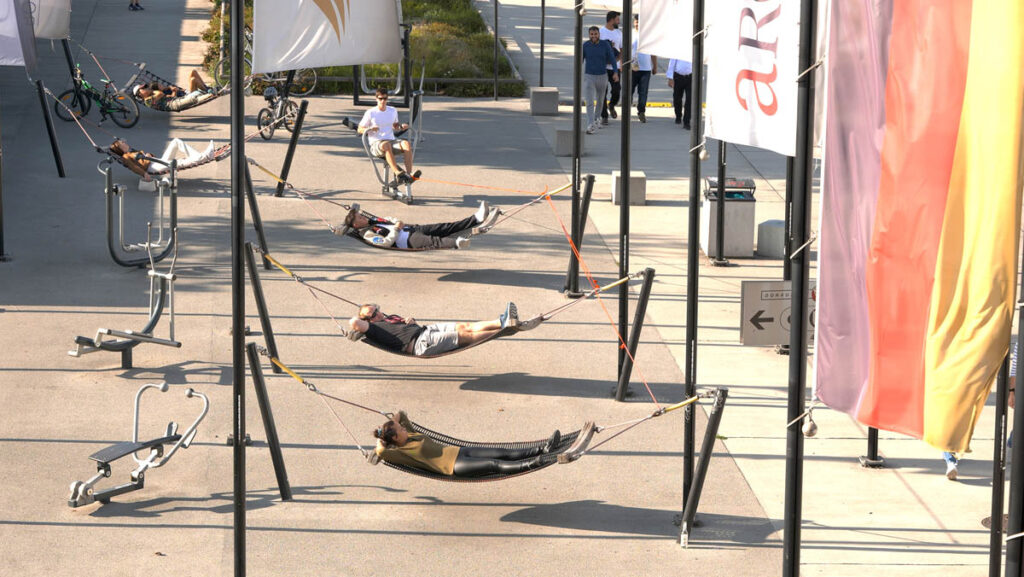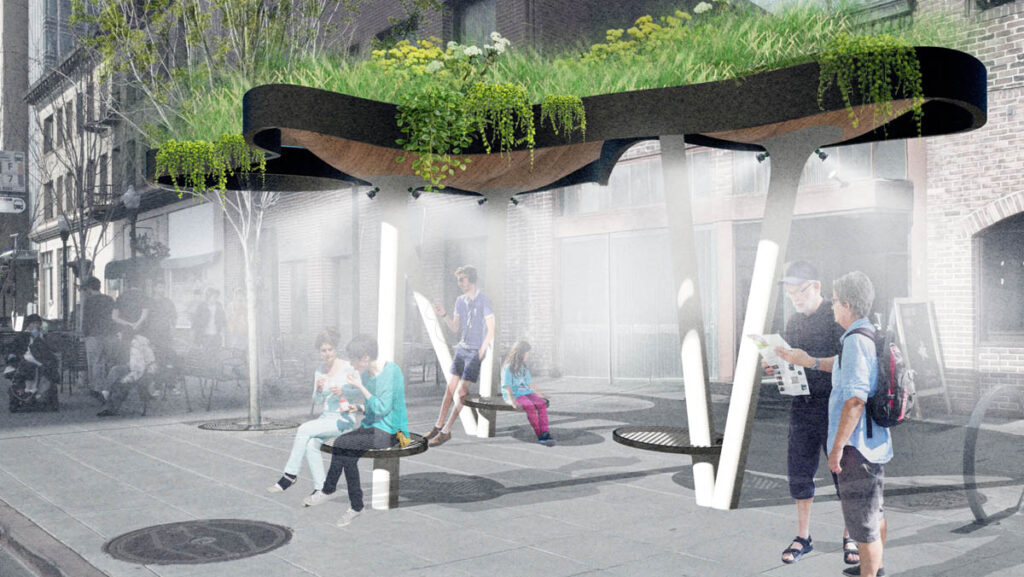
While the ‘Knowledge for all‘ exhibition at the Wien Museum takes a cultural-historical approach to Otto Neurath’s legacy, the Startgalerie at musa is showing the contemporary art exhibition ‘Society & Economy‘. In it, curator and artist Jelena Micić explores a specific moment in the development of Otto Neurath’s Isotypes: the modular museum display of Vienna’s image statistics.
Nowadays all of us must understand social correlations. (—) However, the teaching in this field has hardly begun. – Otto Neurath, The Social and Economic Museum in Vienna, 1925

Neurath’s Isotypes were initially presented to a wide audience in the form of travelling exhibitions, for example from 1927 to 1934 in Vienna City Hall, where Josef Frank developed a minimalist exhibition architecture for the pictograms. To this day, the Viennese method of pictorial statistics pursues the idea of a universal visual language in order to overcome language barriers. For this reason, Micić is not only designing a site-specific work for the ‘Society & Economy’ for the Startgalerie, but is also inviting Viennese, migrant and international artists to engage artistically with Neurath’s Isotypes from today’s perspective. Points of reference for the artists include the transformation of a Rembrandt exhibition in the 1940s, a pilot project for the use of Isotypes in the Schweglerstrasse secondary school and Neurath’s role as director of the War Economy Museum in Leipzig, which was founded in 1918.
The historical museum model cannot be left uncontested, especially its biased narrative founded in the war economy studies of the former Habsburg empire regions. It is of crucial importance to host non-citizen perspectives in order to tackle the questions of society as a whole. – Jelena Micić, Curator
Arists: Vasilena Gankovska, Natalia Gurova, Florian Mayr, mirko nikolić, Andreas Siekmann
Display design and realization: Jelena Micić and Fantoplast
Exhibition: Society & Economy. Contemporary Positions on Otto Neurath
Curator: Jelena Micić
Opening: October 29, 2025, 6.30 pm
Exhibition duration: October 30, 2025 until January 25, 2026
Opening hours: Tuesday to Sunday 10 am–6 pm
Address and contact:
Wien Museum MUSA
Felderstraße 6–8, 1010 Vienna
More about the exhibition: www.wienmuseum.at
Vasilena Gankovska (b. 1978 in Troyan, Bulgaria) lives in Vienna since 2001 and works as visual artist. Degree in Fine Arts, Academy of Fine Arts Vienna and MA in Arts, National Art Academy Sofia. Multiple exhibitions and awards, amongst others in Vienna, Berlin, Sofia and Los Angeles. Her artistic work deals with the different aspects of the urban life, leisure and work and their spaces. Gankovska navigates between different media such as painting, drawing, ceramics and installation. The artistic research includes city walks, derives and short texts which accompany her so-called “visual notes”.
Natalia Gurova (b. in Belarus, raised in Russia, since 2014 lives and works in Austria) is a temporary journalist and permanent artist multidisciplinary practice encompasses sculpture, printmaking, drawing, poetry, site-specific installation, and curating. Gurova studied journalism at Moscow State University and worked in Russian media for over a decade. From 2014 to 2018, studied site-specific art at the University of Applied Arts Vienna, followed by object sculpture at the Academy of Fine Arts Vienna (2018–2025). In 2021–2022, co-developed an exhibition program at the Academy’s Department for Contemporary Art with Vik Bayer. Since March 2022, she has worked with Office Ukraine in Vienna, supporting Ukrainian artists displaced by war. She is interested in how things are connected and disconnected, how people see each other, what is the role of facts and narration, how to be lonely and being in contact, and how structures form and collapse.
Florian Mayr (b. 1982, Wels) is an artist living and working in Vienna. He studied at the Academy of Fine Arts Vienna, where he completed his diploma in 2019 under Heimo Zobernig in Textual Sculpture, following earlier teacher training with Martin Beck, including archival research in New York on Christopher D’Arcangelo’s practice. Mayr’s practice is situated at the intersection of social observation and artistic form, where material choices reflect economic realities and biographical experiences. His work centers on the entanglement of life, labor, and art, articulated through the recurring framework of work, work, work—referring to paid labor, care work, and artistic practice. Drawing from his own lived experience, Mayr explores how time, economic precarity, and social conditions shape artistic production. He emphasizes relational structures over personal sentiment, highlighting the broader systemic pressures that define how emerging artists live and work today.
mirko nikolić (b. in Yugoslavia) is a visual artist, environmental justice researcher and organiser. nikolić holds a PhD in Arts & Media Practice from the University of Westminster, and is currently a researcher at Södertörn University. Through site-specific intermedia performances and critical writing, often as part of different groupings and constellations, nikolić seeks prefigurations of environmental and climate justice.
Andreas Siekmann (b. 1961, Hamm) is a visual artist and art historian based between Vienna, Berlin and Buenos Aires. His practice encompasses text, drawing, and public art projects, often developed in collaboration with artist Alice Creischer. Siekmann studied art history at the University of Munich and holds a PhD in Art from the Kunstakademie Düsseldorf. He currently teaches at the Academy of Fine Arts Vienna. Siekmann’s work is grounded in social critique, focusing on the intersections of art, capitalism, and public services, and addressing the dynamics of global economic, political, and cultural systems along with their environmental consequences.
Fantoplast, founded in 2022, is dedicated to transforming plastic waste into valuable and sustainable products, achieving an 80% reduction in carbon emissions compared to the use of virgin materials. Its five founders — Max Scheidl, Raphael Volkmer, Alessia Scuderi, Julian Jankovic, and Florian Schäfer — bring together expertise in design, art, plastics engineering, and business administration. United by a collective approach, they address the issue of plastic waste through sustainable production, educational initiatives, and collaborations across the arts and cultural sectors.
Jelena Micić is an artist and artistic director of the festival WIENWOCHE (2022- 2025). Awarded the YVAA — Dimitrije Bašičević Mangelos Award (2021), the Ö1 Talentestipendium Bildende Kunst and the kültüř gemma! Fellowship (2018). Doctoral studies at the Academy of Fine Arts Vienna (since 2024). Their curatorial interest addresses struggles of non-citizens, labor migration and global majority relations. On the other hand, their artistic practice focuses on the politics of material and socio- economic aspects of (color) systems. Lives and works in Vienna.





